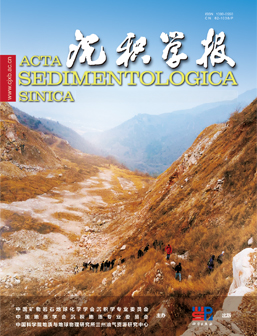Study on the degradation characteristics of n-hexadecane by petroleum hydrocarbon-degrading bacteria Acinetobacter sp.5-5
doi: 10.14027/j.issn.1000-0550.2023.109
- Received Date: 2023-09-15
- Available Online: 2023-12-12
-
Key words:
- Petroleum degrading bacteria /
- n-Hexadecane /
- Salinity tolerance /
- Degradation mechanism
Abstract: To investigate the degradation characteristics of n-hexadecane, a major component of petroleum, by microorganisms isolated from petroleum-contaminated soil in the Changqing oilfield, we employed petroleum-contaminated soil as the source of bacteria. Our objectives were to isolate strains with highly efficient n-hexadecane degradation capabilities, implement a salinization approach to achieve salinity-resistant degradation, and elucidate the kinetics and associated metabolic mechanisms of degradation. Through morphological characterization, Gram staining, biochemical and physicochemical tests, as well as 16S rDNA sequence analysis, we identified the isolated strain as Acinetobacter sp.5-5. The optimal degradation conditions for Acinetobacter sp.5-5 were determined through a resistance experiment spanning 14 days. It was found that, under specific conditions of n-hexadecane concentration (0.5% (V/V)), salinity (0.5%), and pH (7.0), the petroleum hydrocarbon-degrading bacteria achieved a remarkable total degradation of n-hexadecane, reaching 99.24%, with rapid degradation completed within two days (82.13%). Subsequently, the kinetics of n-hexadecane degradation were explored using zero-, quasi-primary, and quasi-secondary kinetic models. The results revealed that the quasi-primary model provided the best fit for describing the degradation process of n-hexadecane. Furthermore, in conjunction with the analysis of culture solution pH and degradation product profiles, our preliminary assessment of the n-hexadecane degradation pathway within this microbial degradation system indicated a process involving chain cleavage and acid production. This study underscores the high degradation potential of petroleum hydrocarbon-degrading bacteria, including their resilience to saline and alkaline conditions, particularly in the context of n-hexadecane. These findings hold promise for their widespread application in the remediation of salinized petroleum-contaminated soils.
| Citation: | Study on the degradation characteristics of n-hexadecane by petroleum hydrocarbon-degrading bacteria Acinetobacter sp.5-5[J]. Acta Sedimentologica Sinica. doi: 10.14027/j.issn.1000-0550.2023.109 |






 DownLoad:
DownLoad: